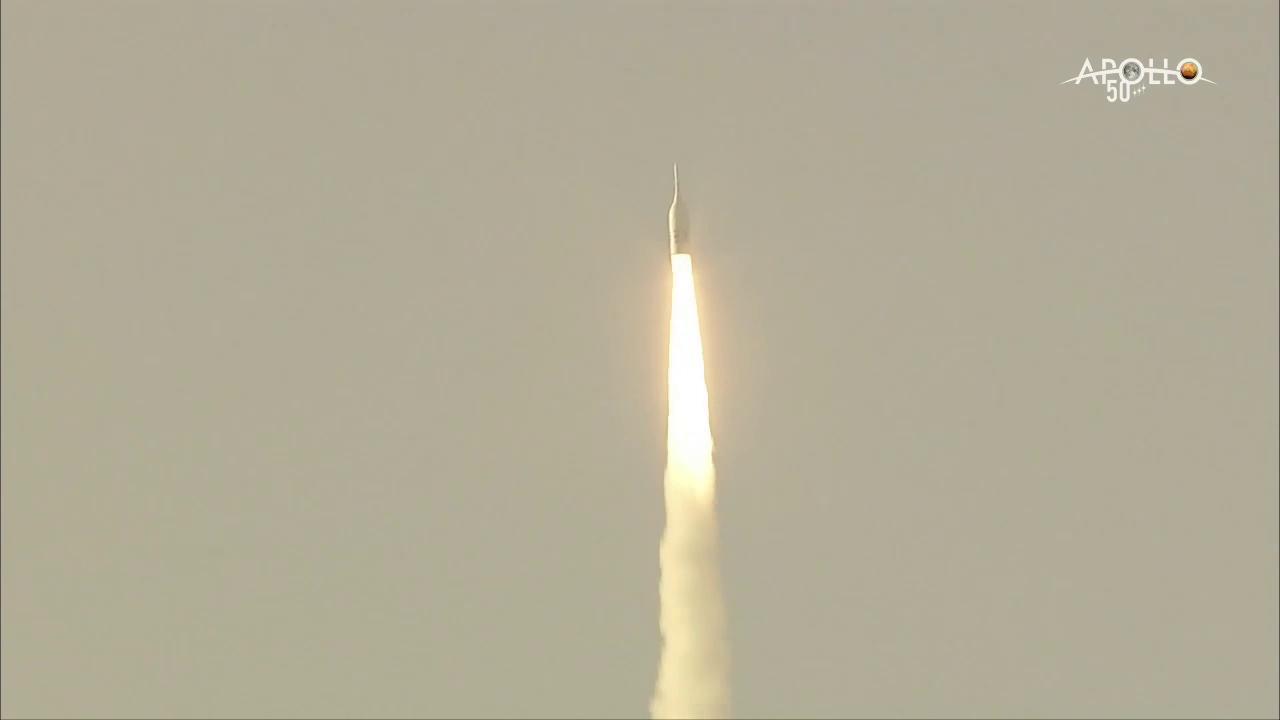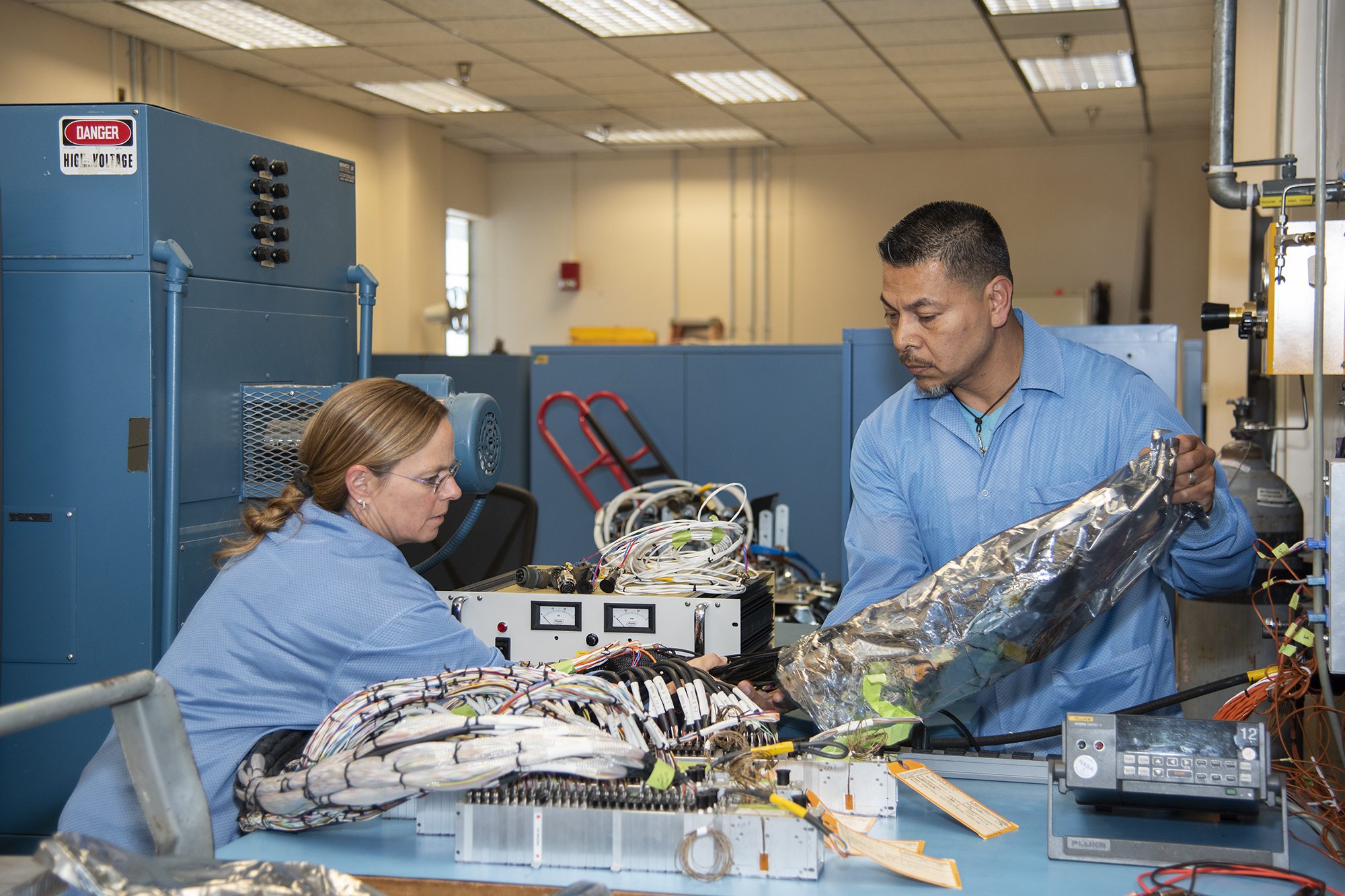NASA Armstrong Flight Research Center staff were in the control rooms when the agency successfully demonstrated the Orion spacecraft’s launch abort system at Cape Canaveral, Florida. The system is designed to take astronauts to safety during an emergency.

About a dozen people from the California NASA center were monitoring systems that the team had developed and tested. In fact, Armstrong had a number of tasks for the Ascent Abort-2 (AA-2), which was a key milestone in preparation for Artemis missions to the Moon that will lead to astronaut missions to Mars.
Gary Martin, AA-2 project manager at Armstrong, said the test went well.
“The recent launch was an outstanding success partly due to the contributions of more than 50 Armstrong people,” Martin said. “Team members made critical contributions to the Orion AA-2 Developmental Flight Instrumentation (DFI) subsystem. This crucial subsystem collected and transmitted all of the engineering data and onboard video that will allow the Orion AA-2 engineering team to determine whether or not the 38 mission objectives were successfully achieved.
“Everything worked the way it was supposed to. In my 43 years of doing this, this is as close to flawless as I’ve seen.”
Chuck Rogers, Armstrong’s Orion program manager, said, “the launch was really exciting” as the system launched skyward.
“There was a lot of anticipation because we have worked on this for four years and then it’s all over in minutes,” said Rogers.
The test was a relatively quick three minutes – enough time for a test version of Orion to be boosted to the right aerodynamic test conditions and the sequence of the launch abort system motor firings to occur.
Nikki Martin was one of the Armstrong team assisting at Cape Canaveral.
“It was exciting to hear the roaring of the rocket and see the actual abort,” she said. “It was a very emotional moment knowing that our team had played an important role in making the launch a success. Even more exciting was being able to review the data from the launch.”
Rose Blomquist, Ernest Nwajagu and Joe Hernandez were in the abort test booster control room looking for anything out of the ordinary. They were monitoring data from the booster, the separation ring and the video system. Meanwhile, AA-2 DFI engineering lead Dowdell and Leo Gross and Jeff Sutherland were in a separate control room monitoring the crew module (CM) and launch abort system (LAS).
“We monitored the crew module and launch abort system instrumentation and I was also in communication with the DFI team in the other control room to make sure everything was ‘go’ on their side for instrumentation,” Dowdell recalled. “We had one pressure sensor that was acting funny early on but after a power cycle (turning it off and on) it was ok. We were concerned for the mission as we are for all of the missions we work on, but we were confident it would be a success.”
It was a busy morning.
“We had so many parameters to watch for anything that might have been unexpected or strange,” Gross explained. For that reason, he only caught a glimpse of the separation and waited for the playback on NASA TV later to see the full launch.
Lucas Moxey, who was key in the development of the camera system (see video above) and data retrieval system, viewed the launch at Cape Canaveral.
“I saw the video later in the day when the telemetry team was playing back the data,” Moxey said. “We saw the video and it was amazing. Of the 12 data recorders, they were all recovered within the hour and 11 of the 12 transmitted recovery location data. Launch data was successfully downloaded from all 12 recorders.”
“The first time I saw the video, I said wow,” Rogers added.
It will be awhile before the team knows if all the data is good, Martin said.
“There is a huge quantity of data to look at,” he said. “There will be people continuing to pour over this data until they complete the final certification that the LAS is safe for human space flight prior to the Artemis 2 mission.”
Team members were excited about their roles.
“It’s an experience you have one or two times in a lifetime,” Hernandez said. “We worked on all these different pieces and it was good to see the whole thing put together.”
There will be pride for the team when Artemis missions begin.
“I think it’s going to be really neat when we see these crewed missions to the Moon and we see that spindly thing on the front of the booster and we can say we did that,” Rogers said.




























